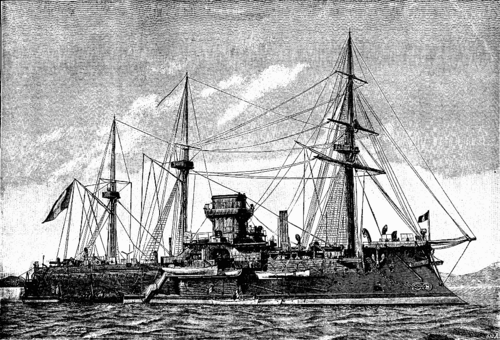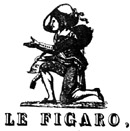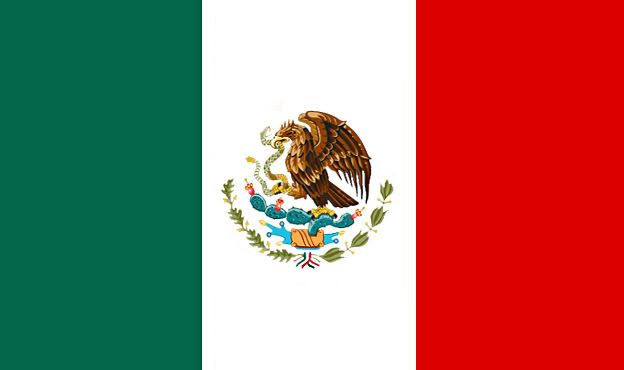Events of the World: 1864EuropeDisappointed by the poor response by the public to the war and conscription, Albert Edward authorised the army to conduct reforms and to attempt to modernise the military.
(-£480, +1 army sublevel)
After the failure to build ships the previous year, the navy ordered shipyards to start spitting out vessels or face consequences. Grudgingly, a few new ironclads were built, but not nearly the amount the navy was hoping for.
(-£4,000, +2 ironclads, +2 ironclads in 1 turn)
The British navy, now that Italy's navy had been severely destroyed, moved to blockade the peninsula. It was mostly successful, but the huge length of the Italian coastline meant that a few smugglers managed to slip through occasionally. British vessels also moved against Russia's Far East to blockade there, but again, it was only partially successful. Finally, British ships in the Baltic began bombarding Dutch, Prussian, and Northern German ports and towns. Fierce defence by coastal batteries kept the raiders from doing too much damage.
(Italy partially blockaded, Russia even more blockaded, small decrease in income to Netherlands, Prussia)
The French also attempted to turn public opinion against the Prussians. With a large Prussian army camped out in Alsace-Lorrain, many were willing to believe, and a wave of nationalism swept through France.
(-£82, +10% public support)
Among the Belgian refugees that fled into France was a man called Joseph Montigny, who brought with him the designs for a revolutionary new weapon, the Montigny mitrailleuse, a crank-operated machine-gun. French military experts seized on the designs, and prototypes were soon being tested.
(-£410, +8% equipment)

Testing the new weaponHoping to demonstrate their new vessel to their allies across the channel, the Plongeur submarine was sent to Britain for studying. Unfortunately, it sank during the journey. British naval officials were not impressed.
Now that they had more time, French officers began to improve the training of their new recruits.
(-£510, +1 army sublevel)
The Prussian army decided that the current cannons were of poor quality compared to the French equivalents, and ordered the production of better quality cannons. Training immediately went ahead with the new weapons.
(-£490, +1 army sublevel)
Recruits continued to pour in, forming lines going around the blocks at recruitment offices, and the Prussian High Command eagerly went ahead with training them.
(+300,000 conscripts)
Prussian chemists managed to improve the quality of their gunpowder, making it burn more uniformly.
(-£300, +6% equipment)
Austria was made up of dozens of different ethnic groups, many of whom chafed under Hapsburg rule. A rousing speech by the Kaiser, however, convinced many to follow him, and any thoughts of rebelling against the Empire were effectively silenced.
(-£78, +5% public support)
By copying tactics from their allies and enemies alike, the Austrian army managed to improve the coordination and quality of their armed forces.
(-£580, +1 army sublevel)
Old military technology was gradually phased out with new designs in the Austrian army.
(-£310, +5% equipment)
In Sweden, the new constitution was finally drawn up, uniting the Kingdoms of Sweden and Norway with Denmark.
The quality of Sweden’s factories was modernised and improved.
(-£520, +1 industry sublevel)
With war raging in Europe, the neutral haven of Sweden led to a flood of refugees. The Swedish government opened its borders to the refugees.
(-£120, +10,000 population)
The Dutch navy decided that instead of building new ships, the better plan would be to convert the current wooden sail-powered vessels into armoured steam-driven ships.
(-£620, -1 ship-of-the-line, -3 sail frigates, +1 ironclad, +3 screw frigates)

Dutch ironclad – a former ship-of-the-linePropaganda was released portraying the war as a Dutch nationalist struggle. There was some success in converting those against the war.
(-£110, +5% public support)
Factories in the Netherlands were directed to the production of new and better equipment for the Dutch army.
(-£300, +5% equipment)
The Russian army was reformed, with corrupt and nepotistic officers rooted out and replaced with those who had more merit for the job.
(-£490, +1 army sublevel)
The Russian army also attempted to produce newer models of artillery. However, a fatal design flaw went unnoticed until after production had begun, and it would be a while before the factories could fix the error.
(-£100)
A massive conscription plan went underway in Russia, with thousands of new recruits being given a uniform and a weapon and sent to the front line.
(+450,000 conscripts)
Domnitor Alexandru Ioan Cuza, leader of the Romanian people, made a rousing speech to improve Romanian unity and nationalism in this dangerous time.
(-£90, +5% public support)
Romanian shipyards began producing new vessels, although the low industry level struggled somewhat with the order.
(-£2,450, +1 screw frigate, +3 sail frigates)
Military drills were conducted by Romania to try and prepare for a Russian invasion.
(-£500, +1 army sublevel)
The Italian army began rapid conscription to prepare for the war. The recent victory in Veneto helped recruitment, however it was still fewer men than hoped.
(+120,000 conscripts)
The output of farms and mines in Italy were increased, all for the war effort.
(-£400, +1 resource sublevel)
Italian officers pored over reports of the strategy that led to victory in Veneto, and drills were conducted to test the new methods.
(-£490, +1 army sublevel)
Better quality equipment was purchased by the Italian military.
(-£310, +5% equipment)
In the Ottoman Empire, blueprints of the new breach loading Tabatière rifles gained from France were submitted to factories and weapons manufacturers. Production began, but many factories were slow to catch on how they work.
(-£300, +5% equipment in 1 turn)
A brutal reform of the tax system was launched, intending to crack down on corruption within the Ottoman bureaucracy.
(-£300, increased income)
Making use of French and British experts, the Ottoman army was drilled and pushed to new levels of efficiency.
(-£500, +1 army sublevel)
Greece, surrounded by the Ottoman Empire, decided on the construction of forts on the border, with regulars stationed there.
(-£450, increased defences on the Greek-Ottoman border)
The government seized control of farms and mines, claiming they were needed for the war effort. To their surprise, most were okay with the move, as Greek nationalism and anti-Turkish feelings were strong.
(-£360, +1 resource sublevel)
A propaganda campaign was launched to drum up support for the war.
(-£77, +5% public support)
Spain attempted to outfit their current vessels with better technology and better equipment.
(-£470, +1 navy sublevel)
Exploitation of Spain’s colonial resources was increased, as Spain itself had few natural resources.
(-£420, +2 resource sublevels)
Factories were built all over Spain in an attempt to increase industrial output.
(-£530, +1 industry sublevel)
The AmericasIn the USA, the house and senate passed the 13th amendment to the Constitution, abolishing slavery in the United States. While some claimed it was an act of desperation, with pressure being piled on the CSA, this didn’t seem the case.
(+35 prestige)

First reading of the Emancipation ProclamationAdmiral Farragut, leading a fleet of one ironclad, six ships-of-the-line, ten screw frigates, and twelve sail frigates attempted to sail into Charleston harbour to bombard the Confederate capitol. However, Farragut underestimated the Confederate defences. Waiting until the Union ships had sailed deep into the harbour, Confederate batteries on the shore and on Fort Sumter opened fire, ambushing the Union fleet, forcing them to retreat under heavy fire.
(-1 ship-of-the-line, -3 screw frigates, -3 sail frigates to the USA)
Virginia, although occupied by the Union, still had a largely pro-confederate population. However, this was not the case in the western part of the state, and Lincoln allowed West Virginia to split from the rest of Virginia and become a separate state.
In the Confederacy, President Davis embarked on an ambitious plan to raise more recruits. He freed any slaves and their immediate families if they agreed to three years military service. Thousands rose to the opportunity, however some slave-owners demanded reparations, and there were many soldiers who did not like the idea of serving alongside black troops.
(-£120, +100,000 conscripts, -5% public support)
Hefty rewards were offered to any privateer who could sink or even capture a Union vessel. Many attempted this, but for the most part, the Union ships were victorious. However, a few managed to sink Union vessels, and one daring privateer even managed to capture one, returning to the Confederacy to claim his reward.
(-£100, +1 sail frigate to the CSA, -3 sail frigates to the USA)
The Confederacy, on top of allowing slaves to join, also widened the age-range for conscription. Many new recruits were now conscripted, but short of the amount the government hoped for.
(+72,000 conscripts, CSA now at their maximum level of conscripts)
A joint project between the Colombia government and the Church boosted the education of those living in the countryside.
(-£150, +5% education rate)
Incentives were offered to anyone who invested in Colombian factories. Many took the offer, as the war in Europe was hurting industrial output.
(-£470, +1 industry sublevel)
Better roads were built connecting ports with more inland regions, with the hopes that it would boost economic growth and commerce in the region.
(-£500, +1 infrastructure sublevel)
As it was election year in Colombia, a propaganda campaign launched by the Conservative candidate Bartolomé Calvo. It was successful, and the population stayed conservative.
(-£90, +5% public support, new leader)

Colombia’s new PresidentIn Brazil, the government launched a massive agricultural campaign to increase the output of farms.
(-£310, +1 resource sublevel)
Transports were once again sent to North America to pick up refugees. As always, the ships were full.
(-£400, +7,000 population)
Trade flowed between Brazil and Sweden, trading Brazilian produce for Swedish technology, increasing the income of both nations.
(increased income to Brazil, Sweden)
Argentinean ports were upgraded and expanded, to facilitate an increase in trade. It was an ambitious plan, and an expensive one, but it soon brought results.
(-£720, +1 infrastructure sublevel, +1 resource sublevel)
The region of Patagonia was slowly brought under Argentine control, as settlers began to move south, protected by soldiers. Most natives of the region decided to join the Republic, but there was some sporadic fighting.
(-£200, Argentinean territory increased)
The government built schools in all urban areas, and implemented a policy to make primary education free and compulsory in Argentina.
(-£230, +7% education rate)
Foreign investors were encouraged to build factories in Argentina. Some took up the offer, but progress was slow.
(-£510, +1 industry sublevel in 1 turn)
AsiaThe Great Qing furthered their education reforms, hoping to develop a modern and standardised system across the entirety of the Middle Kingdom.
(-£240, +6% education rate)
Roads and railways were built quickly and efficiently, connecting the outer regions of Mongolia and Xinjiang with more populous regions.
(-£490, +1 infrastructure sublevel)
Attempts were made to improve the quality of the military’s arsenals and shipyards, however bureaucratic errors meant little results.
(No effect)
The size of the Japanese navy was increased, with 3 new sail frigates and 2 new screw frigates joining the fleet. However, the cost was high.
(-£3,100, +2 screw frigates, +3 sail frigates)

Japanese naval vessel in Tokyo harbourNaval war games were held in order to ensure the new vessels were integrated successfully into the Japanese fleet. These were expensive, but ultimately the new ships performed well.
(-£500, +1 naval sublevel)
The army was also reformed, with attempts made to review and change the military doctrine to reflect modern times.
(-£520, +1 army sublevel)















